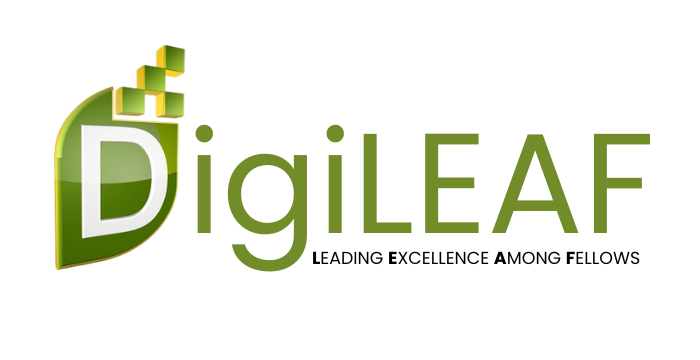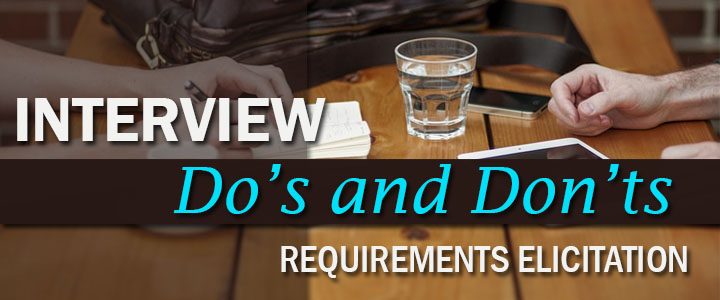In our previous article, we discussed several tips in conducting an Observation. Here we expand…
Requirements Elicitation: Interview Dos and Don’ts
Among all requirements elicitation techniques, interviews are arguably the most popular and frequently employed. They rank top in most business analysts’ elicitation techniques toolkit.
The Business Analysis Body of Knowledge (BABOK) defines interview as “a systematic approach for eliciting information from a person (or a group of people) in an informal or formal setting by asking questions and documenting the responses.”
Well-conducted interviews are those where stakeholders are free to express their needs, where the business analyst is free to probe and ask-follow up questions, and where both parties attain a shared understanding of the problem, other issues, and possible solutions.
While many business analysts confess to using interview as a cop-out technique in most circumstances, one should be aware of its advantages, as well as its limitations. Here we are to give you a repertoire of dos and don’ts to guide you into that next fruitful requirements elicitation using the interview technique:
DOS
- Do establish rapport with the interviewee. Face-to-face interviews, whether physical or virtual, present an opportunity for the business analyst to forge friendly ties with the stakeholder. Take that opportunity and use it to make your conversation engaging.
- Do set up the interview in a private place. A private, enclosed location translates to an atmosphere of trust and confidence between you and the interviewee. In privacy, interviewees can respond to questions more sincerely and openly.
- Do ask follow-up questions when confused. Because feedback is immediate in interviews, there’s less room for misinterpretations or, worse, confusion between interlocutors; the interviewee can ask for clarifications, while the interviewer can ask follow-up questions to validate the interviewee’s answers.
- Do observe non-verbal cues from the interviewee. Face-to-face interviews allow the BA not only to efficiently elicit requirements from stakeholders, but also to examine their answers when presented by or with supporting – or contradictory – non-verbal expressions. There are things that mere words can’t betray, so always be mindful of the non-verbal behavior that affects communication between you and the interviewee. Adjust your probing style accordingly.
- Do consider the cost of doing interviews. We know at the get-go that interviews are time-consuming. Multiply that if you need to interview so many stakeholders for a project and it happens that they’re geographically dispersed. This means you, as the business analyst, have to travel from one place to another to conduct interviews with different stakeholders. In some cases when it’s nearly impossible to request for a face-to-face meeting with a requirement source, you can turn to your friend, that is technology. Provided you have the necessary equipment and decent internet connection, you can conduct interview sessions through video conference.
DON’TS
- Don’t nitpick on your interview plan details. Plan the interview well, but since interviews require a small bit of spontaneity for it to work for both interviewer and interviewee, give yourself some flexibility in the way you ask the questions. No interviewee wants to listen to an interviewer who’s clearly only going through a run-down of pre-recorded questions. It doesn’t make for a sincere and compelling discussion of needs and requirements. In practice, you can write a few main questions. As the stakeholders talk, use their answers to formulate follow-up questions that will then maneuver the conversation to know the problems or to uncover requirements.
- Don’t make the interviewees feel uneasy. It’s not a cross-examination session! Especially if you’re interviewing a staff-level stakeholder who’s afraid of saying the “wrong things” to an astute analyst like you, it’s important not to make them feel like you’re out to get them. Ease them into the process, and convey the message that you are collaborating to get to the solution of a problem. Actions speak louder than words, so make sure you keep your gestures, facial expressions, and tone of your voice in check.
- Don’t lead the interviewee on. Unintentionally so, especially in the case of seasoned BAs, it’s easy to jump right to the solution part even if we have not fully captured the requirements from certain stakeholders. This is truer for cases when the stakeholder isn’t very forthcoming, and allows the business analyst to steer the conversation to a path the BA desires. The BA says, “I think this is what you mean, and you need this to be able to do that blah blah blah”. And the interviewee says, “Okay.” In elicitation, the single most important skill to showcase is one’s active listening skills. Save the analysis and development of solutions for later!
- Don’t rely on your own interpretation alone. One manifestation of active listening is when the interviewer actively paraphrases what he hears from the interviewee. When a stakeholder articulates something, take a moment to process it and echo the thought back to the stakeholder. Whether you’re right or wrong, you will know because the stakeholder will immediately confirm or refute your understanding of what has been said. Do this while interviewing and before documenting the elicitation results. This mechanism will clarify misapprehensions before they balloon into something bigger.

